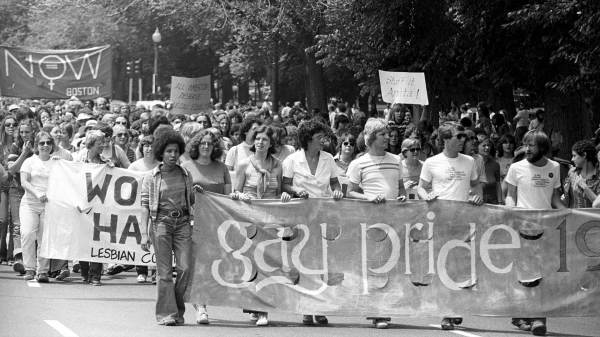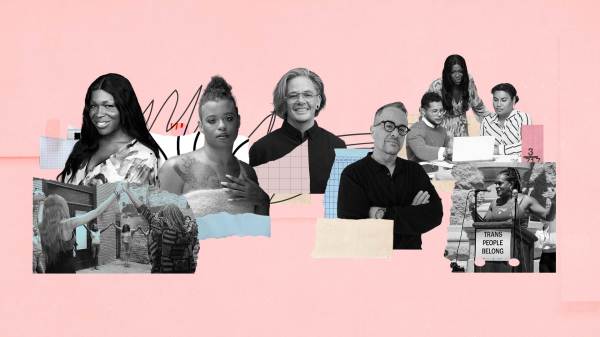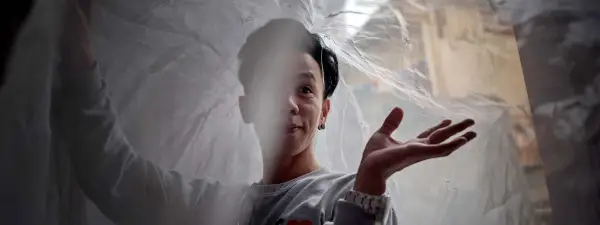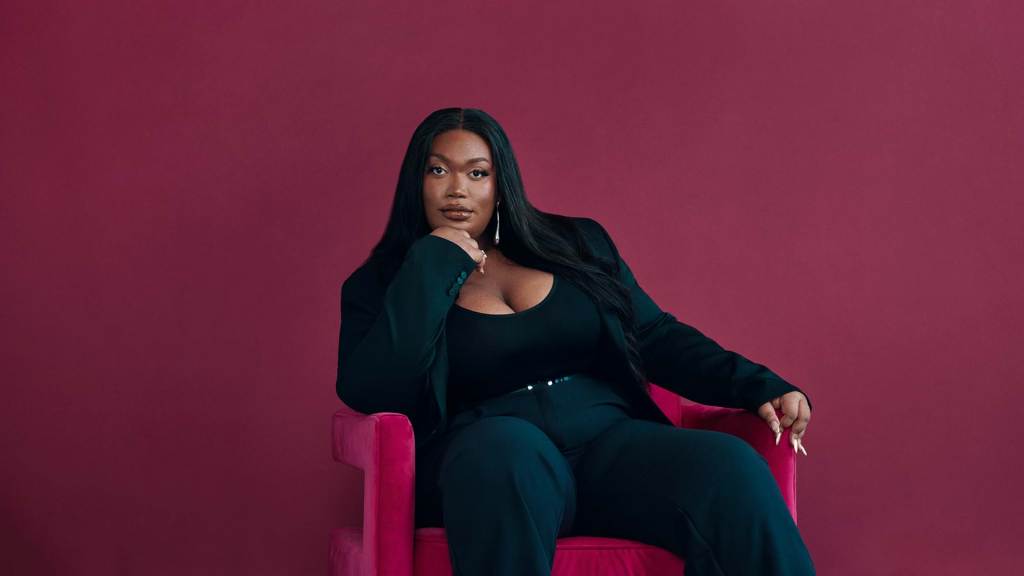 Justin French/Ford Foundation
Justin French/Ford FoundationIn her senior year of college, Jordyn Jay signed up for a course with Dr. Marta Moreno Vega, a prolific writer, educator, and Nuyorican activist. Moreno Vega told her students that shortly after becoming director of El Museo del Barrio in 1971, it lost all its funding. Convinced that the organization’s after school program was an invaluable lifeline for Puerto Rican youth, staff worked for free, brought their babies to work, and subsisted on home cooked meals their husbands delivered at lunchtime. After a year of long hours and no remuneration, Moreno Vega went to the Metropolitan Museum of Art and told the storied institution that if it didn’t have an exhibition featuring Puerto Rican artists, she would show up on its doorstep with 1,000 creatives ready to march.
“Marta definitely didn’t know 1,000 Puerto Rican artists,” said Jay, who created her own college major—Imagining Abolition—to study how social movements, including criminal justice reform, can leverage art for positive change. She was seated at a large rectangular table in the brightly lit conference room of Black Trans Femmes in the Arts (BTFA), which she founded in 2020 to provide this historically excluded population with the resources to “live their lives to the fullest and chase their heart’s desire.” Now 25, she wore large gold hoop earrings, a short-sleeved white dress, and a vintage, bright blue silk scarf tied over the crown of her head. As she spoke, her doe-like, expressive brown eyes widened, and the corners of her mouth turned upward into a mischievous grin. “But the promise of a protest was enough to get the Met to act,” she added. By the end of that year, the museum had an exhibition, and El Museo got its funding back.
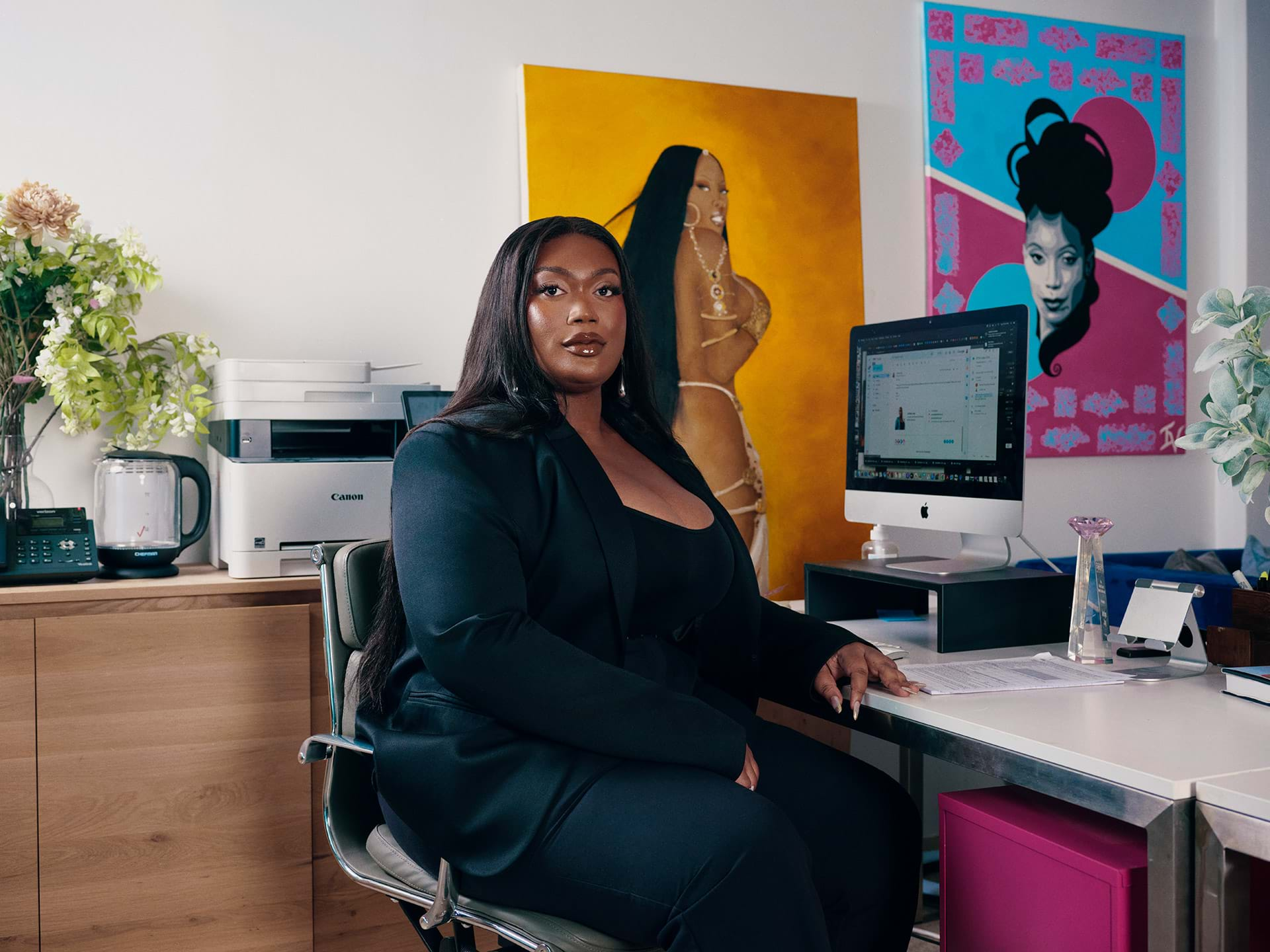
“That story—that lesson—really got me thinking,” she explained, nodding her head. “I knew I had to figure out something—whether it was a project or a program or an organization—that would mean enough for me to work for a year without funding.”
After receiving her undergraduate degree, Jay decided to pursue a master’s in Art Politics. She spent her time studying and, like many students, stressing about her next steps, her former professor’s narrative on repeat in her brain. The 21-year-old knew she wanted to do something to support Black queer people. She knew she loved the arts—particularly musical theater and directing. She knew she yearned for a path that felt both deeply personal and meaningful. After reading Janet Mock’s Redefining Realness at 18, she also knew that while she wasn’t entirely certain where she fit on the gender spectrum, she knew she wasn’t cis. She did not know what, exactly, she was meant to do, but she wondered if she should be doing whatever it was back home in Florida, where she was born and raised.
Jay moved to New York City in 2015 to attend New York University in Greenwich Village, which is often referred to as the birthplace of LGBTQ+ rights. In June 2019, the city would commemorate the 50th anniversary of the Stonewall riots, erecting a statue of famed friends and trans rights activists Marsha P. Johnson and Sylvia Rivera for the world’s first permanent, public monument honoring transgender women. Jay lived in one of the world’s preeminent LGBTQ+ epicenters, but she felt like an outsider at NYU, which was predominantly white and, in her opinion, assessed art based on its aesthetics, rather than its ability to catalyze conversation and change. It was a lonely existence.
“I was the only Black trans femme at school—or at least the only visible one,” she said. “And I was so busy with classes that I didn’t have time to find my people. Somehow, I knew they were out there.”
The first place she looked for others like her was books, but an LGBTQ+ history course proved frustrating. Jay spent hours perusing library archives only to discover a desert of information on Black trans femmes through the decades. She tried to decode certain words and phrases, unpacking and deconstructing language in the hope that it would reveal a treasure trove of trans heroes. In her heart, Jay knew there was a rich legacy of Black trans femme artists who had come before her. She also knew they were out in the world, painting, writing, sculpting, drawing, performing, acting, directing, dancing, and engaging in other creative pursuits. She wanted to become an expert on them, but her subjects kept proving elusive. She would have to venture out into the world beyond academia to find them.
Accessibility Statement
- All videos produced by the Ford Foundation since 2020 include captions and downloadable transcripts. For videos where visuals require additional understanding, we offer audio-described versions.
- We are continuing to make videos produced prior to 2020 accessible.
- Videos from third-party sources (those not produced by the Ford Foundation) may not have captions, accessible transcripts, or audio descriptions.
- To improve accessibility beyond our site, we’ve created a free video accessibility WordPress plug-in.
On a chilly February night in 2019, Jay traveled solo by Uber to the sprawling, 50,000-square-foot Knockdown Center in Queens for the 10th anniversary of Ballroom Throwbacks. Recent television shows like “Pose,” “Legendary,” and “My House” put ballroom on the present popular culture map, but balls had their first mainstream moment in 1990, when Madonna released “Vogue,” and Paris is Burning won the Sundance Film Festival Grand Jury prize. For decades before that, these underground affairs were held in cramped community center basements and YMCA halls and presided over by surrogate families split into competing “houses”;
“That first ball was completely transformative for me,” said Jay, a wistful look on her face, almost as if she were remembering a first love.
families like House of Xtravaganza (née 1982) were led by anointed “mothers” and “fathers” who would guide and support their children, many of whom were homeless after being forced or kicked out of households that refused to accept them. In addition to creating a critical kinship system, the balls provided a much needed safe space for predominantly low-income, LGBTQ+ youth to “walk” or compete in various categories, providing cutting commentary on class, race, and gender they dared not display beyond those sacred walls. “That first ball was completely transformative for me,” said Jay, a wistful look on her face, almost as if she were remembering a first love. “The moment I walked in, it felt like a sort of homecoming. I saw all these beautiful trans women. They were so self-actualized, so encouraging of each other. And a whole warehouse of people was screaming and chanting for them.”
Jay did not immediately add to the revelry. Instead, she found herself holding back tears. She needed a moment before she could join the joy. This was sisterhood—today, this word is written in all caps on the vision board in BTFA’s conference room—at its finest. It was supportive and hopeful—a stark contrast to media reports documenting the violence and isolation faced by Black trans women. “I really, really wanted to cry, but I held back my tears,” she said. “I was also really elated.”
Southern exposure: sports, service, and solace in the arts
Growing up in Jacksonville, Florida’s most populous city, Jay often felt what she describes as “weird.” The youngest of three children by almost a decade, she had an older brother and sister who took it upon themselves to educate the baby of the family. “I was exposed to a lot of things early on,” she said, including singer/songwriter Fiona Apple, whose music she still enjoys. “I watched ‘Blade’ when it first came out, and I remember going to see The Hills Have Eyes, but I never saw any of those classic children’s movies like The Little Mermaid or Beauty and the Beast,” she laughed. “I got to go to some places I probably shouldn’t have—my sister even tried to take me to prom, but her school said, ‘absolutely not.’ ”
Jay was also surrounded by athletes in a family that was “very sports-centered.” Her grandmother coached a girls softball team. Her mother played on four different varsity sports teams. Her father played college football. Her brother was a state winning track star, and her sister was a cheerleader. When Jay announced that she wanted to sign up for musical theater, her family gave her quizzical looks and threw their hands up in the air. They pressured her to try sports. She reluctantly agreed to join the football team but quit because she was more interested in doing cartwheels than playing quarterback. She gave basketball a shot but didn’t enjoy that either. In baseball, she was frozen with fear that the ball would hit her in the face. “I was an artsy kid, and no one really knew what to do with that.”
As one of the only Black students at her predominantly white Christian private school, Jay also stuck out because she was feminine. “It definitely felt like I was living in two worlds,” she said. “I didn’t fit in at school, and I always had this feeling that there wasn’t really space for me there.”
Though Jay had difficulty connecting with her classmates, her large maternal family—her grandparents, two aunts, and their respective children lived less than a mile away—was close-knit. Family gatherings occurred at least once a week. The adults emphasized that if someone was in need, there was only one thing to do.
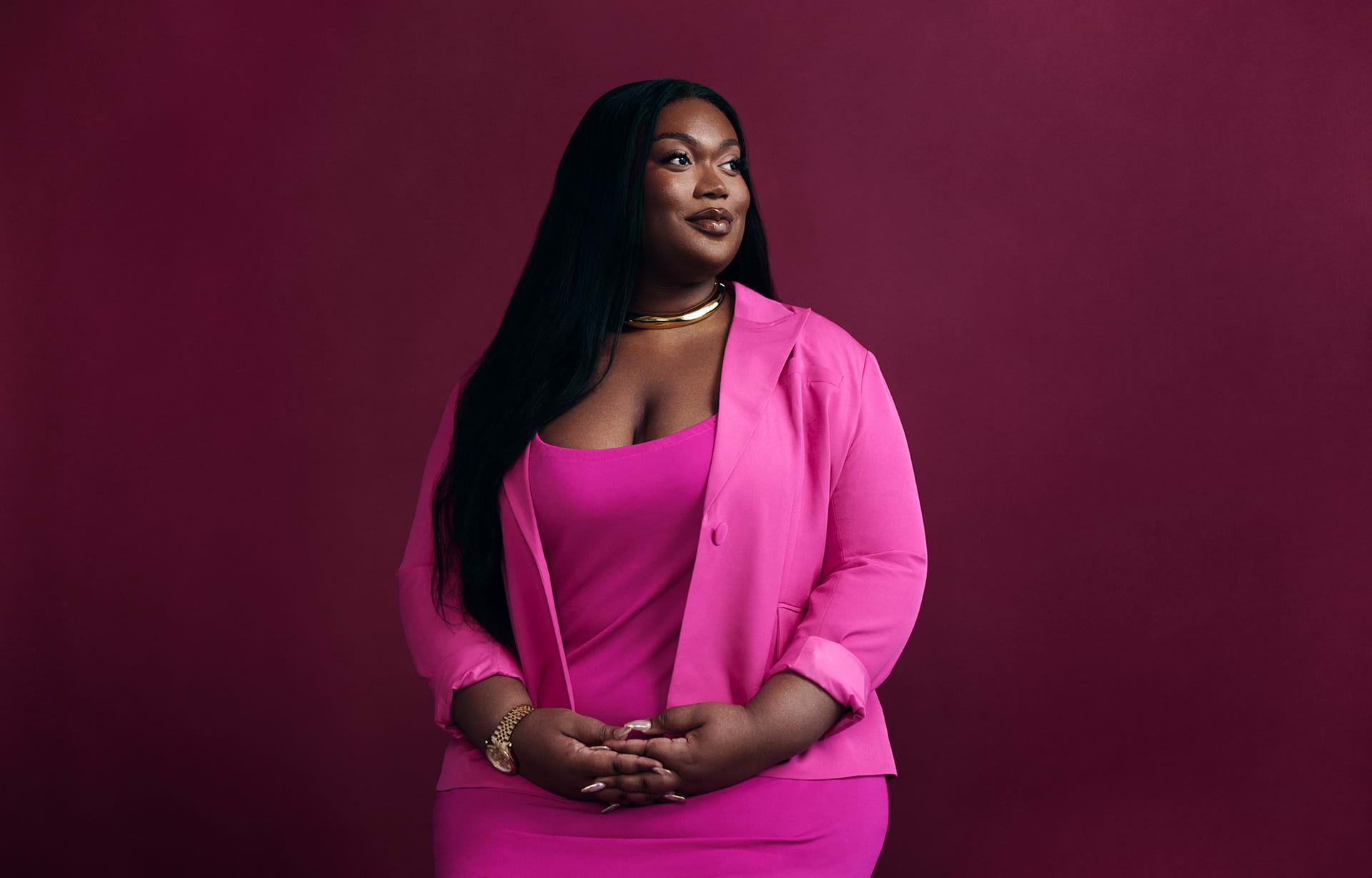
“My family has this really strong culture of being of service. My grandmother was a pillar in her neighborhood, and I have so many memories of people coming to our front door.” She paused, choosing her words carefully. “A lot of them looked like they weren’t in the best place in life. These were strangers. Someone else might have turned them away, but once they mentioned that so-and-so had sent them and said they’d heard my grandmother was someone who took care of people, she did just that. Without hesitating. She’d say, ‘Well, then, come on in. Let me fix you a plate of food.’”
Jay’s parents were similarly committed to giving back to their community. “When I was very young, I remember asking my dad why some people couldn’t buy food or why they didn’t have anywhere to live. He always emphasized having empathy for people who weren’t as lucky as we were. And his message was that I had an obligation to be of service to my community.” When she was in high school, the family also began a tradition that continues to this day. Each Thanksgiving and Christmas they would volunteer at a homeless shelter and serve breakfast.
As a trauma center nurse in one of Jacksonville’s roughest neighborhoods, Jay’s mother built a career around taking care of people, but also spent her downtime studying, even if she had already pulled a 16-hour shift. She became a nurse practitioner then a professor of nursing and, in May 2023, received her doctorate in nursing. In between achieving these milestones, she injected her sister with prenatal vitamin shots and spent years, up until the very end, serving as the primary caretaker for a close friend dying from cancer. “My family taught me a lot about love and taking care of people. Their ethos was very communal. You treat everyone with love. You make sure they have what they need, especially when they’re down. You make sure they’re fed. You bring them back to health when they’re sick. All the good parts of Southern Christian values.”
By the time Jay reached middle school, her siblings were in college. In many ways, she felt like an only child. With no one standing over her shoulder telling her what to do—and what to watch and listen to—Jay felt like she could finally make her own decisions and figure out what really mattered to her. “It was a very different experience being an early teen without my brother and sister around. It gave me a little bit of space to explore myself in ways that I might not have done if they’d still been home.”
In her freshman and sophomore year of high school, Jay participated in all of her school’s theater productions, but as awards and accolades flowed in, she grew frustrated by her traditional school’s limited drama opportunities.
“My family taught me a lot about taking care of people…You treat everyone with love. You make sure they have what they need, especially when they are down.”
Armed with a meticulous PowerPoint presentation, she pitched her parents on attending the Douglas Anderson School of the Arts. They were supportive and, she admitted, “also happy not to pay tuition anymore.” At the same time, however, they wanted to make sure Jay had a backup plan. Given her superlative math skills, they proposed engineering, which Jay immediately rejected. She was adamant: Musical theater or directing were the only options for her. Jay flourished in her new school and found both her niche and her burgeoning voice. “I wouldn’t say that I officially came out, but if people asked, I would say that I was gay, which was something I had never imagined being able to do.”
Because of extreme performance anxiety around singing, Jay gravitated toward theater’s production side. In her senior year, she was asked to direct a one-act play, which she described as a horror piece. The genre was, of course, a familiar one, thanks to the early film education she had received vis-à-vis her older brother and sister. “It was really exciting to figure out how to make a group of people sitting in a black box theater feel terrified. To be honest, it was some of the most fun I’ve ever had.”
Northern lights: new beginning and changing scenes
Today, Jay directs video productions for BTFA, which she began conceiving in August 2019, three months after completing her master’s and six months after attending the Knockdown Center’s Ballroom Throwbacks. She took to heart the lessons of a social entrepreneurship class taught by a brusque but brilliant professor, who said that the best way to implement a big idea was to start small. Jay announced—on Facebook, Instagram, and through a well-connected friend—that she was hosting a meetup at NYU’s Tisch School for Black trans femmes working in the arts. The event was open to all creatives—art teachers, administrators, advocates.
“I expected it to be huge and figured that at least 50 to 100 people would show up.” On game day, Jay could count on two hands the number of participants at that first meeting. When she looked around the room, her first feeling was one of sadness, but when everyone started talking, she felt great relief. “There was so much passion and excitement in that room. All of the people who were supposed to be there showed up. And it was intergenerational. There were young people who were under 19 and people who were in their 40s and had been transitioning since the ‘90s. Everyone kept saying they’d never been in a room like that and that this was a community they desperately needed.”
The group, including artist B. Hawk Snipes, who is now a core BTFA member, talked about what they needed from a supportive arts organization. Several artists spoke about the challenges they were facing. A rap artist admitted that she was scared to enter a recording studio because she anticipated discrimination. A dancer said that she shied away from practice because of transphobia. “I felt a deep desire to keep building this community, and I knew, without a doubt, that we were all going to be important resources for each other. This was what I was meant to be doing.”
Over the next few months, Jay also convened a group of prominent Black trans femmes working in the arts. Gia Love, Asanni Armon, Morticia Godiva, Mercy Kelly, Jamie Lee, Victoria Von Blaque, Mizz June, Miss Mojo, Ianne Fields Stewart, Linda La, Milan Garçon, Jonovia Chase, and Rose Rayos became the group’s original board. Once BTFA was more established, Love, Armon, Godiva, Kelly, Lee, Blaque, Miss Mojo, Stewart, La, and Chase became community advisory board members, serving in this capacity through March 2021.
Three months later, in November, Jay decided to host an open mic night at Starr Bar in Bushwick, which celebrates and supports social justice movements. She had no funding but paid the deposit out of her own pocket and asked the audience—between 50 and 60 members—for Venmo donations. That night, BTFA also announced its official name and launched on social media, posting to Twitter, Instagram, and other platforms.
When the pandemic hit just a short time later, former Gov. Cuomo ordered a lockdown in New York City. It was mid-March and Jay had another event scheduled, but she refused to be deterred. Instead, she pivoted and leaned into social media, highlighting artists’ past work, documenting what creatives were working on, and launching a remote interview series. Every Tuesday and Thursday, BTFA would speak to well-known Black trans women artists. “It had been so frustrating trying to find information about these women when I was in grad school. I really felt it was important to provide them with a space to talk about their work and their process. And I wanted to humanize them.” Profiled artists during that time included pop recording “artivist” Mila Jam, MC Miss Mojo, and Disability Futures fellow Tourmaline. BTFA members also interviewed each other so the team could share its ideas and vision. By June 2020, the organization had 800 Instagram followers—today it has nearly 43,000—and Jay knew she was on to something.
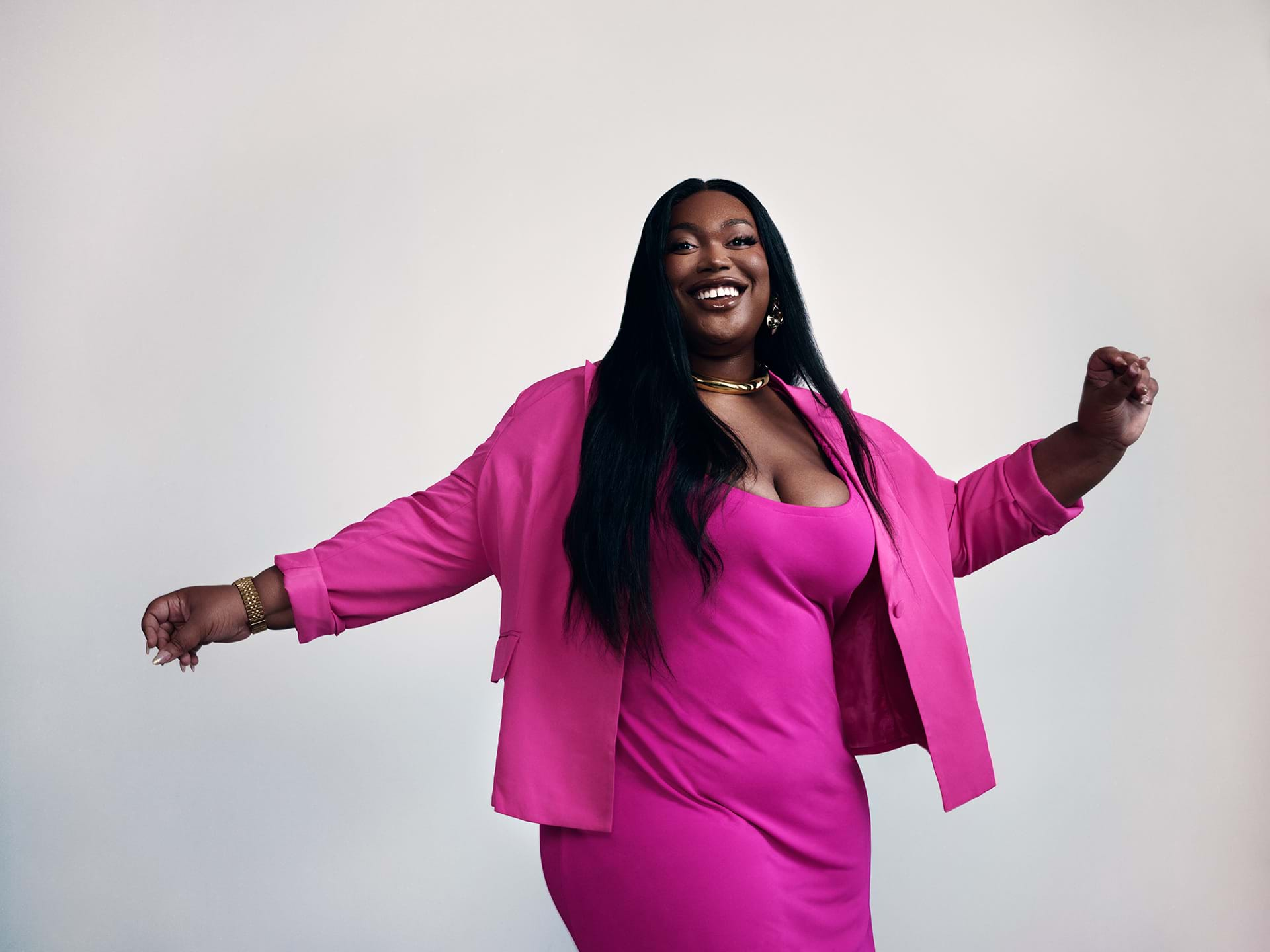
As nationwide protests erupted over the brutal killing of George Floyd, Jay began hearing horrific stories that terrified her. Trans people all across the country were being physically and sexually assaulted while protesting police brutality and after being detained. Accounts from Jacksonville, which already had what has been described as “non-stop” murders of trans people, were particularly gruesome.
A Brooklyn march for Black Trans Lives was scheduled for June 14. In the 24 hours preceding the event, two black transgender women—Dominique Fells, 27 and Riah Milton, 25—were killed. Jay’s anxiety skyrocketed. Fearing for her community’s safety, she spoke to other trans-led organizations like The Okra Project and Black Trans Travel Fund and asked if it would be possible to create a fund to protect Black trans protesters.
“At the time, that was really tough, but I worked up a quick graphic to share on Twitter and Instagram. Within a few hours, it went viral. Laverne Cox shared it. So did Troye Sivan, Janet Mock, Indya Moore, and Hunter Schafer. The entire production team from ‘Schitt’s Creek’ reached out. It was shocking. My phone didn’t stop buzzing for five days, and by the end of a week, we had raised $1 million.”
Next Act
June and July 2020 were busy. Jay attended protests but was careful to make a quick escape if things became hectic. “I was the actual bail fund and couldn’t afford to get locked up.” Prison is a terrifying place for trans people, particularly because officials often disregard gender identity and instead insist on housing them based on the sex they were assigned at birth or according to genital characteristics. Jay moved quickly to bail out folks in Atlanta and New York. She paid the medical bills for a trans person in the Midwest. And, she provided transportation money so protestors could return home.
By the end of the summer, the marches died down. Jay remained cash flush, which proved to be both a blessing and a challenge. She was able to quit the day job she despised, but she was also overwhelmed. BTFA was still in a nascent stage. It barely had a proper email address, nevermind the capacity to manage six figures. The possibility of being shut down loomed large. “We were scrambling to find a fiscal sponsor, and I definitely went through a period of total shock. My dream sort of happened overnight. Now what do I do?”
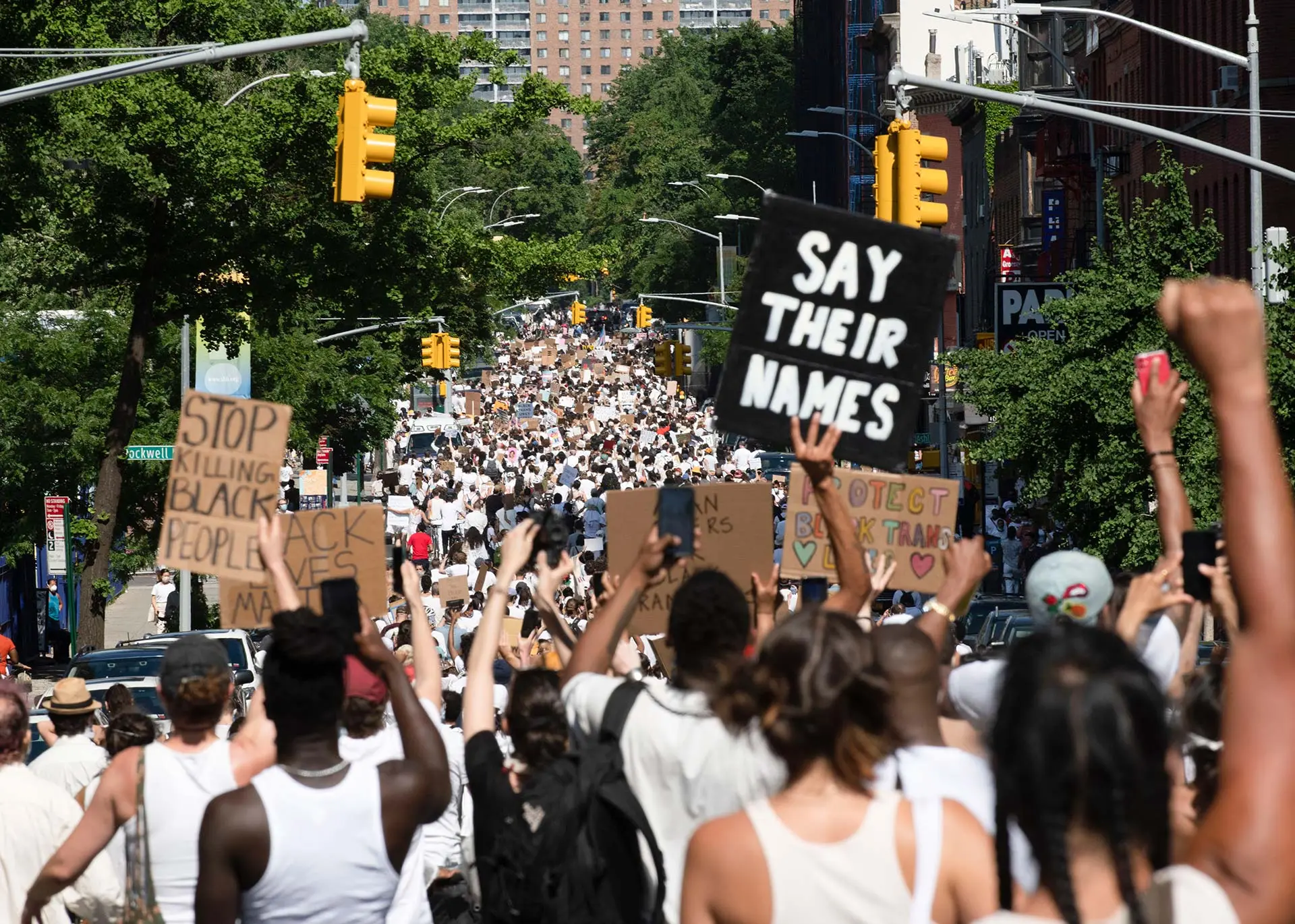
It was time for a plan, and Jay’s vision was to help her community move beyond surviving. She wanted to get them to a place where they were thriving—and remain a resource. “So much funding goes to larger organizations that are doing specific trans projects. They aren’t led by LGBTQ+ people, and they aren’t invested in making sure the most vulnerable people in the trans community are really taken care of.” After spending her formative years watching her parents and grandmother actively role model caretaking every day of their lives, Jay is naturally warm and welcoming—a consummate professional when it comes to making sure people have what they need to feel good and do great. “Having that childhood and being able to give so openly is a privilege that not many people have,” she said. “I think it really set me up to do the kind of work that I do.”
Today, BTFA offers a suite of complimentary services to support creatives. Whether they need amenities—healthcare, housing, and food—legal services, or exposure to other artists, BTFA makes it happen. The organization also supports celebrations and produces public performances and programming—more than 30 to date and counting—that showcase Black trans femmes’ visionary talent. Through its residency program, artists receive stipends, free access to studio space and materials, and exposure. In March 2022, BTFA opened a 2,100-square-foot artist studio and co-working space. Adorned with bright pink velvet chairs and artwork from recent residents—a baby blue and pink portrait of Marsha P. Johnson greets visitors—the well-appointed space also features a photo studio, visual arts studio, meeting room, and three hair and makeup chairs.
Jay is busy directing BTFA, but she is also committed to changing the hearts and minds of funders. For example, she’s urging donors to understand that not all organizations are starting from the same place. It would be erroneous—and inequitable—to judge them as if they have all benefited from robust budgets when many LGBTQ+-led organizations start from a place of extreme deficit. Funders need to allow for a learning curve. And, they should be amenable to funding fiscally sponsored nonprofits that are led by people who live the challenges the organization addresses; these may not have a five-year track record, but they’re going to get the job done. Jay would also like funders to understand that simply funding under the LGBTQ+ umbrella isn’t sufficient. “If that’s how you make grants, you’re not going to reach the people who are at the bottom and need the most support. Funders need to be really intentional—I’d love to see more money going to disabled trans folks and Indigenous trans folks.”
Jay is also causing a tidal shift in her own family. “Bringing my family to events has really helped them understand what it means to be transgender,” she said. “I recently took my mom to BTFA’s Trans Day of Visibility Show in Times Square, and she really liked it. She’s excited about the art I’ve shared with her, and she wants to learn more.” It’s a far cry from Jay’s childhood when she and her mother would be in Walgreens or Starbucks, and her mother would quietly gesture toward someone with an Adam’s apple and whisper, “that’s not a real woman.”
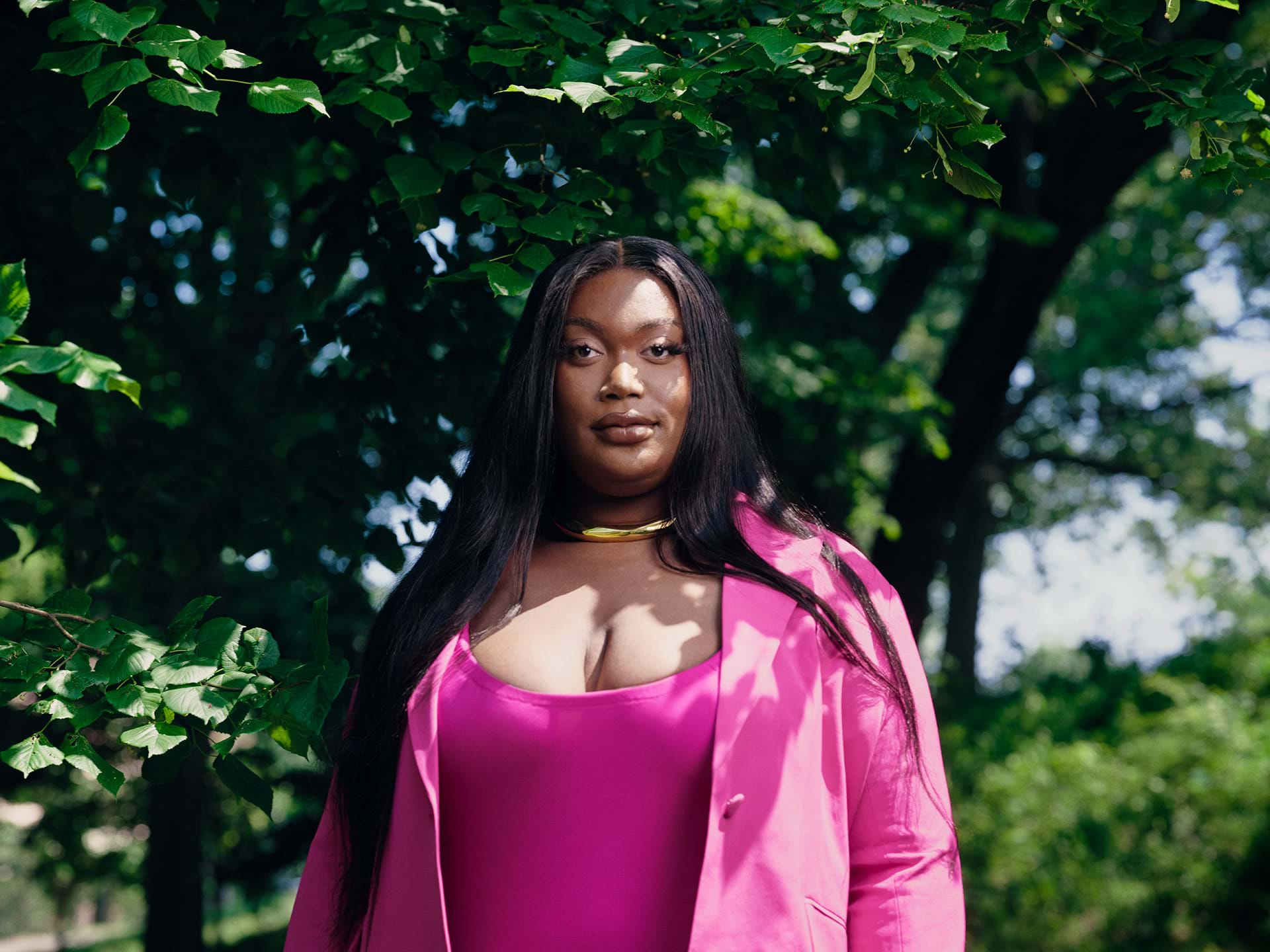
BTFA presently supports artists in five countries, including Ghana, Germany, and Jamaica, but New York City is home base for the foreseeable future. While Jay once imagined building an organization in Jacksonville—and still yearns to be a resource for Black trans folks in the South—Florida’s recent spate of transgender bathroom bills are proof positive that she isn’t safe there. She took a long, deep breath: “This is a dark moment, and my heart really hurts for young people. There is a very strong, concerted effort to wipe us out.” Jay anticipates a painful, imminent conversation with her family and having to tell them that the next time she visits home will likely be the last. She remains committed to BTFA’s growth and hopes that within the next decade, the organization will have chapters around the country—Atlanta and Los Angeles are on her radar—and at least one international office, possibly in Brazil. Paris, with its booming ballroom scene, would also make sense. “We’re always asking ourselves where we’re most needed and where we’ll be safe.” She’d also like to move the world toward a place where Black trans femme artists are simply viewed as creatives, who are making incredible contributions. “I would love for our art to be seen as more than just representative of our identity so it’s not viewed under the lens of Black trans femme art. I’d like it to stand on its own as a gift to the world.”
Related grantee

